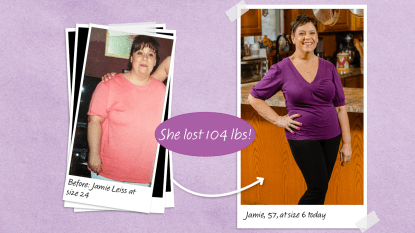The Easy Way to Cure Your Exhaustion and Brain Fog

Chronic fatigue, severe brain fog and unrelenting joint pain forced Myra Godfrey to completely withdraw from life… until a friend’s suggestion unlocked the secret to easing her symptoms and feeling great!
As she stared into her young daughters’ eyes, Myra Godfrey’s heart broke. “I’m sorry, girls, Mommy is too tired to play today,” she explained. And as the girls sadly walked away, Myra’s own eyes filled with tears. This has to change, she despaired.
For more than two years, Myra had been bouncing from doctor to doctor, desperate to find the reason for her constant exhaustion, brain fog and achy joints. She underwent extensive testing, but doctors couldn’t pinpoint the cause.
As months passed, Myra was able to do less and less. Her home and work life suffered, and she grew more depressed with each passing day, yet she refused to give up on herself. Finally, in 2008, Myra was diagnosed with fibromyalgia, a chronic disorder that causes widespread pain throughout the body, fatigue and difficulty concentrating and sleeping. But, sadly, a rheumatologist explained there weren’t many proven treatments.
He prescribed diet changes, scheduled daily naps, structured bedtime and exercise. Myra followed his instructions to the letter, but her symptoms persisted, which made her more anxious and depressed, forcing her to go on anti-anxiety medication.
Feeling defeated, Myra saw her future dimming. Then, one day, a friend shared how beneficial meditation had been in relieving his workrelated stress and anxiety.
While Myra liked the idea that it was free and something she could do at home, she was doubtful she’d be able to quiet her mind enough. It won’t hurt to try it, she decided, desperate.
Peace and Calm
Following her friend’s instruction, the next day, Myra sat alone in a quiet place in her house and closed her eyes. But as she’d feared, her mind swirled wildly with random thoughts.
But just as she was about to give up, she imagined herself permanently disabled, unable to enjoy life or her family. I can’t give up on myself, she thought.
The next day, she tried again. Instead of attempting to empty her mind of all thoughts, she decided to focus intently on one thing for 3–5 minutes, like the image of a flame she visualized in her mind or the sound of water flowing. As she did, her breathing slowed and her mind relaxed. She sat in silence for 5 more minutes, focusing on her calm breathing. Afterward, she was amazed at how that sense of peace remained with her throughout most of the day.
Encouraged, Myra began meditating for 10 minutes every morning, and after a month, she noticed she felt calmer and less anxious for longer periods of time. She also enjoyed an unexpected benefit—a boost in her energy. As weeks passed, she felt stronger and more optimistic. And after six months, her doctor was able to take her off of all anti-anxiety medicines.
As her energy levels continued to climb, and her depression and brain fog lifted, Myra reclaimed her life. Today, with meditation, the 40-year-old says she feels great and is better able to handle the stresses life throws at her.
“I never anticipated how well such a simple meditation would work for me, or that it would be the secret to my recovery,” she cheers. “There’s no limit to what I can do!”
3 Super Easy Ways to Meditate (That You May Already Do)
• With a Light Touch
Research shows meditation can be a struggle for many. But gently rubbing two fingertips together for 10 seconds is a form of tactile meditation that quickly tames tension, says Shirzad Chamine, Ph.D., author of Positive Intelligence. Shifting your focus from the stressor to a physical sensation instantly quiets the mind!
• With Deep Breaths
As soon as you feel a stress surge, taking eight deep breaths can turn off the “fight or flight” response, says mindfulness expert Chris Peterson, M.D., who explains the strategy lowers your heart rate to engage the parasympathetic nervous system, allowing you to stop anxietyprovoking thoughts.
• With Movement
A walking meditation boosts mood and energy, plus it slashes the risk of high blood pressure and more, says Christiane Northrup, M.D., author of Making Life Easy. Simply breathe deeply and focus on feeling your body in motion (arms swinging, feet pushing off the ground).
This story originally appeared in our print magazine.













